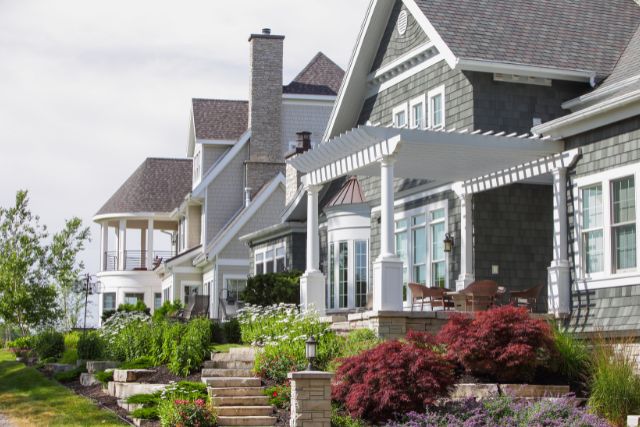Australia’s heritage homes, especially in Sydney, are treasures that reflect our rich historical tapestry.
Preserving and enhancing these properties through painting requires careful consideration and a deep understanding of their historical and cultural significance.
This comprehensive guide will provide you with the necessary insights and steps to undertake this important task responsibly and effectively.

Understanding Sydney’s Heritage Homes
Sydney’s heritage homes are not just structures; they are storytelling canvases that hold decades, sometimes centuries, of history.
They range from Victorian to Federation styles, each with unique architectural details.
Understanding the architectural styles and historical significance of these homes is crucial in maintaining their integrity during any restoration work, including painting.
Historical Significance and Architectural Styles
The architectural styles of Sydney’s heritage homes are diverse, including Victorian, Georgian, Federation, and Gothic Revival.
Each style has distinctive features like ornate facades, stained glass windows, and unique colour schemes.
Recognizing these styles is essential to maintain their historical accuracy and aesthetic appeal during painting projects.
Legal Protections and Guidelines for Heritage Properties
In Sydney, heritage properties are protected under various state and local regulations. These regulations often dictate the types of materials and colours that can be used in restoration projects.
Before planning your painting project, it’s important to consult with local councils and heritage organizations to ensure compliance with all legal requirements and guidelines.
Preparation for Painting Heritage Homes
Preparing a heritage home for painting is a meticulous process that requires more attention than modern buildings.
This preparation involves assessing the current condition of the property, choosing the right professionals, and understanding the necessary legalities involved.
Assessing the Current Condition
Start with a thorough assessment of the home’s exterior. Look for signs of damage, such as peeling paint, cracks, and mould.
This step is crucial to address any underlying issues before they are covered up by new paint, ensuring the longevity of your paint job and the structural integrity of the home.

Choosing the Right Professionals for the Job
Selecting experienced professionals who specialize in heritage properties is essential.
These experts understand the nuances of working with older structures and can provide valuable advice on the best materials and techniques to use.
Obtaining Necessary Permits and Approvals
Heritage homes often require special permits for restoration work.
Ensure you or your contractor obtain all necessary approvals from local heritage councils and governing bodies to avoid legal complications and potential fines.
Choosing the Right Paints and Colors
The choice of paint and colours for a heritage home is not just a matter of aesthetics but of historical accuracy. Using the wrong type or colour of paint can significantly alter the home’s character.
Historically Accurate Color Palettes
Research is key in determining historically accurate colour palettes. Many heritage organizations provide resources on period-appropriate colours.
It’s essential to choose a palette that not only respects the home’s era but also complements its architectural features.

Quality and Type of Paint for Heritage Buildings
The quality and type of paint used on heritage homes are crucial. Traditional lime-based paints or modern equivalents that allow the building to ‘breathe’ are often recommended.
These paints prevent moisture from being trapped in walls, a common issue in older homes.
Environmental Considerations and Sustainability
Environmentally friendly and sustainable paint options are increasingly available and should be considered. These options not only protect the building but also contribute to a healthier environment.
Painting Techniques and Best Practices
Applying paint to a heritage home requires specific techniques that differ from modern painting methods.
Understanding these techniques ensures that the painting not only looks authentic but also protects the building’s materials.
Traditional Methods vs. Modern Techniques
While modern painting techniques are efficient, they may not always be suitable for heritage properties.
Traditional methods, such as brush painting, are often more appropriate for these homes, as they provide a finish that is in keeping with the home’s period.
Dealing with Common Challenges in Heritage Homes
Heritage homes often present challenges like lead paint removal, dealing with delicate materials, and working around ornate details.
Professional painters experienced in heritage work can navigate these challenges effectively.

Ensuring Longevity and Maintenance of Paint Work
Regular maintenance is key to preserving a heritage home’s paintwork. This includes routine inspections and touch-ups to ensure the longevity of the paint and the underlying materials.
Navigating Legal and Ethical Considerations
Painting a heritage home involves not only aesthetic decisions but also legal and ethical considerations. It’s vital to navigate these aspects carefully to preserve the home’s historical integrity.
Understanding Local Regulations and Standards
Each area in Sydney may have different regulations and standards regarding heritage homes. Familiarizing yourself with these local requirements is essential for a compliant and successful painting project.
Working with Heritage Conservation Authorities
Engaging with heritage conservation authorities can provide valuable guidance and ensure that your painting project respects the home’s historical significance.





